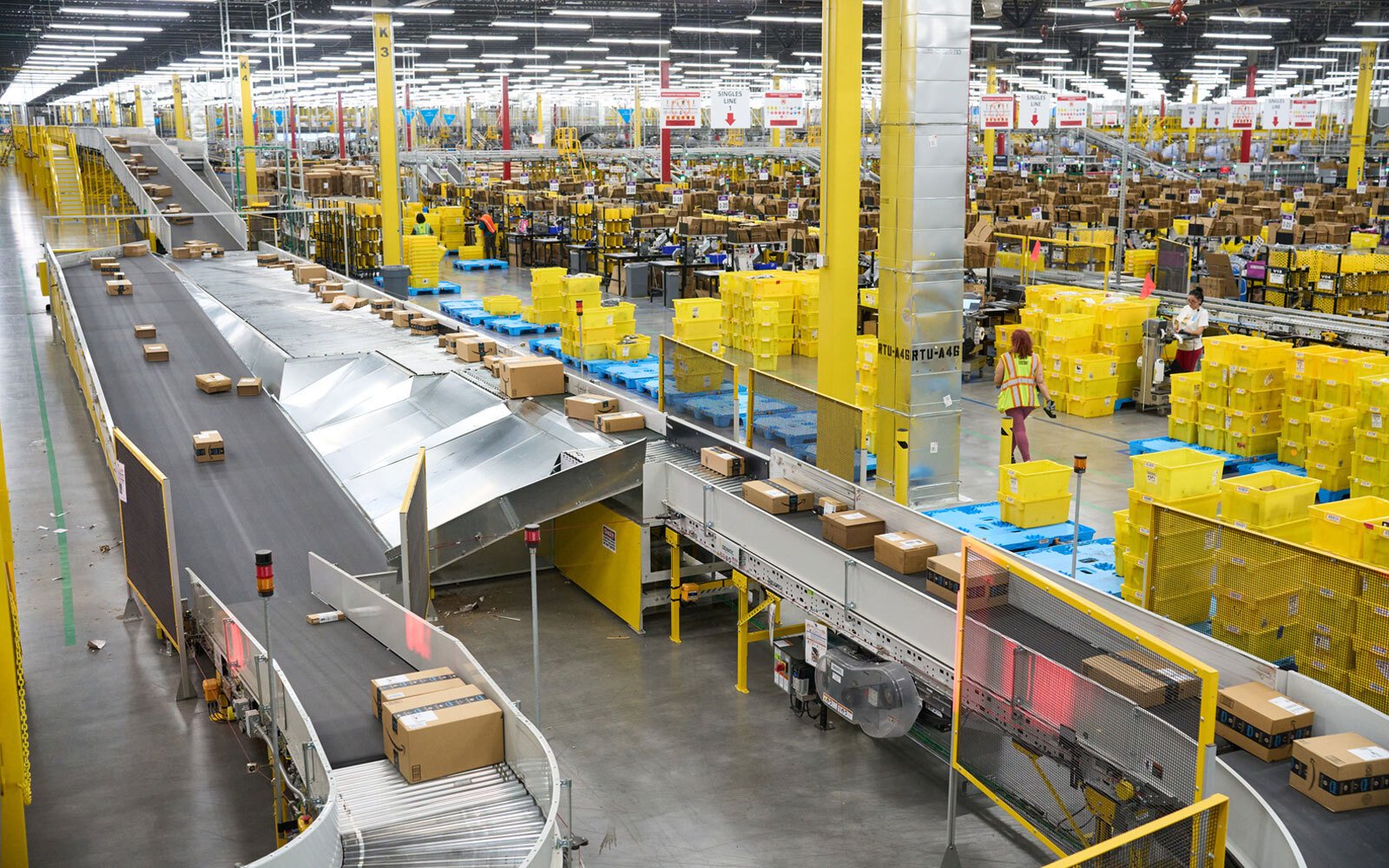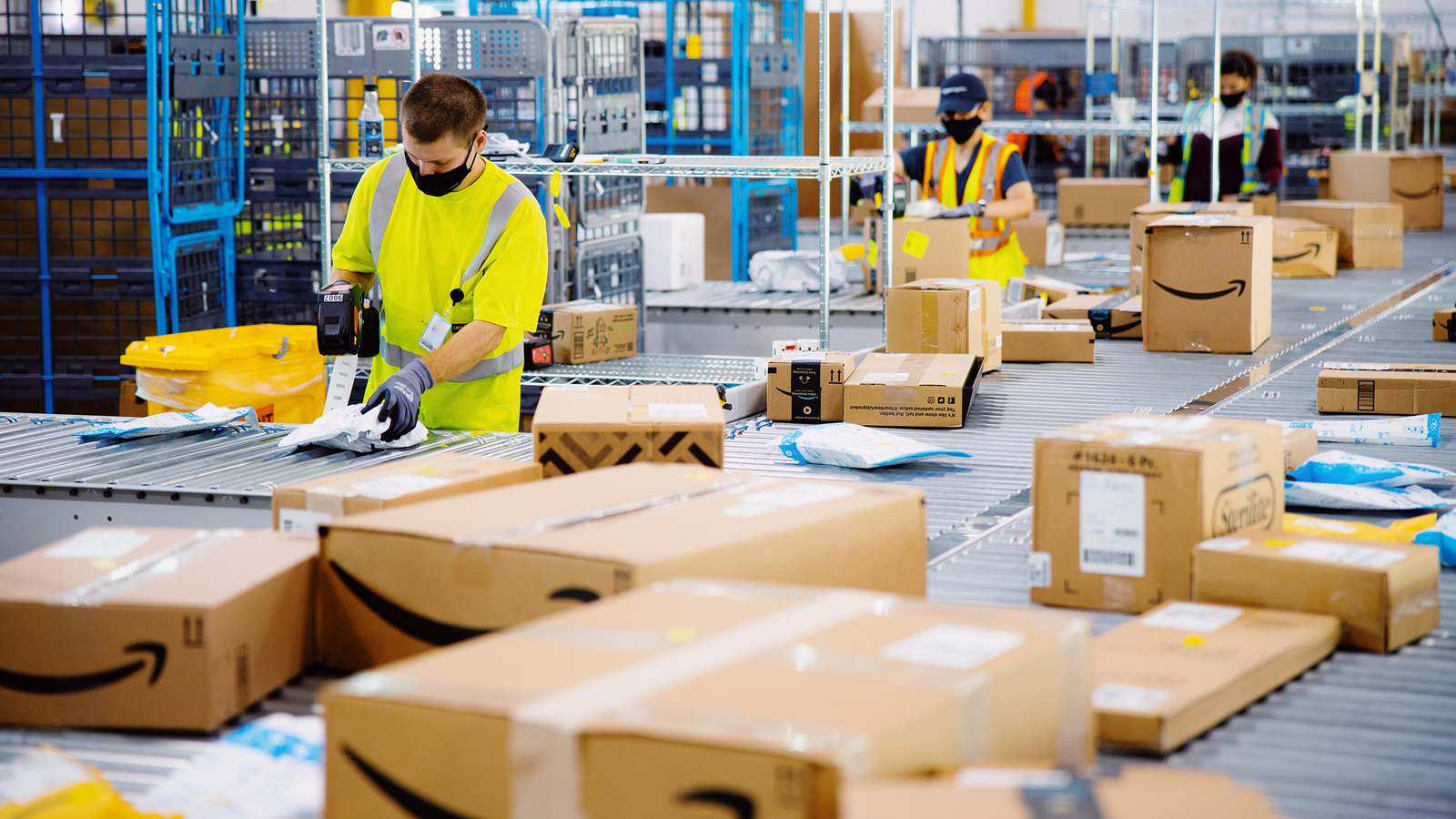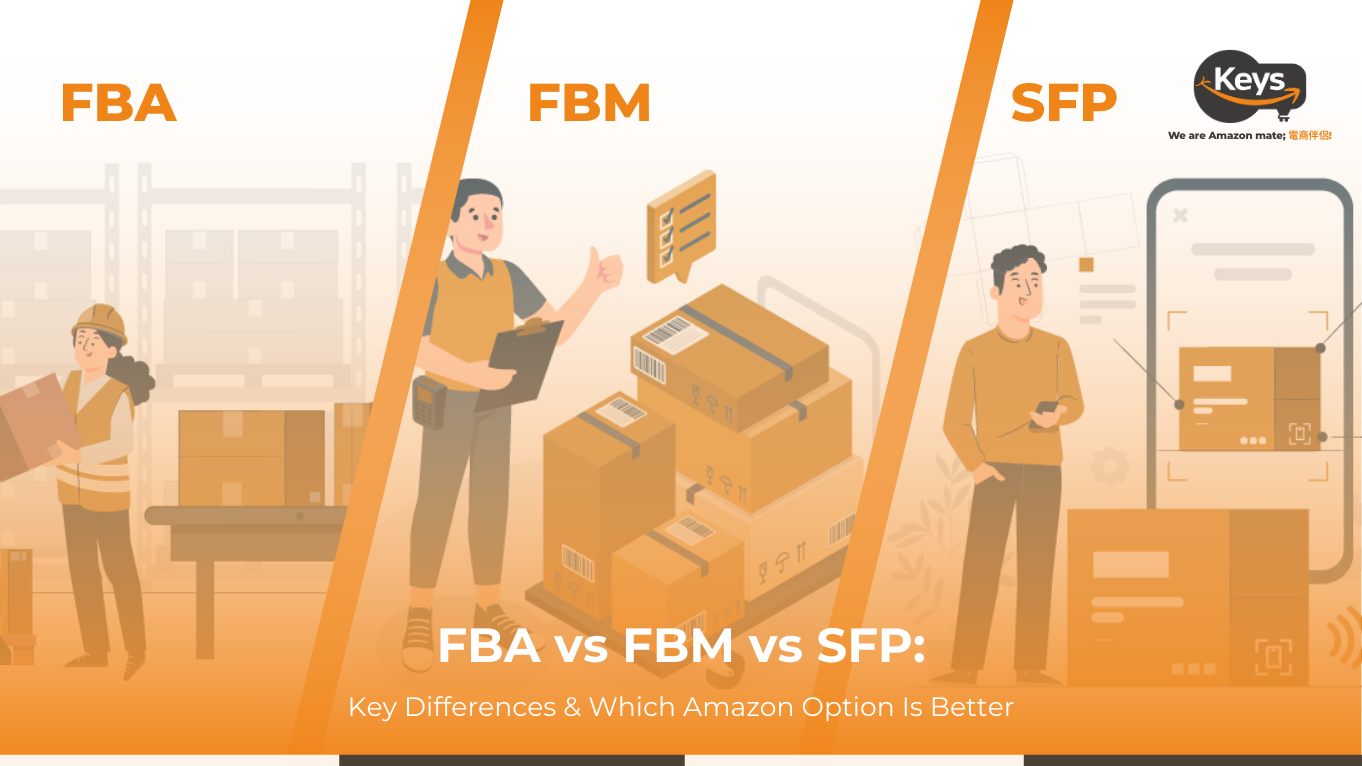Choosing the right fulfillment method can significantly impact your success on Amazon. In this article, we compare FBA vs FBM vs SFP to help you understand the key differences, pros and cons, and how each model fits various business needs. From scalability and cost to control and Prime access, you’ll learn which option best aligns with your fulfillment strategy.
FBA vs FBM vs SFP: Understanding Amazon Fulfillment Option & Key Differences
When it comes to selling on Amazon, choosing the right fulfillment method is crucial for optimizing logistics and enhancing customer satisfaction. The three primary fulfillment options available to sellers are Fulfillment by Amazon (FBA), Fulfillment by Merchant (FBM), and Seller Fulfilled Prime (SFP). Each option has its unique advantages and challenges, making it essential for sellers to understand the differences to make informed decisions.
FBA – Fulfillment by Amazon
FBA allows sellers to store their products in Amazon’s fulfillment centers, where Amazon takes care of storage, packing, shipping, and customer service. This model is particularly beneficial for sellers looking to scale quickly, as it provides access to Amazon Prime customers and ensures fast shipping. However, FBA comes with various fees, including storage and fulfillment costs, which can impact profit margins.

FBM – Fulfillment by Merchant
FBM gives sellers complete control over their fulfillment process. In this model, sellers are responsible for storing, packing, and shipping their products directly to customers. While FBM can be more cost-effective due to the absence of FBA fees, it requires a robust logistics setup and may limit visibility since FBM products are not eligible for Amazon Prime. This option is ideal for sellers who prioritize branding and customization in their shipping processes.

SFP – Seller Fulfilled Prime
SFP combines the benefits of both FBA and FBM, allowing sellers to fulfill orders from their own warehouses while still offering Prime shipping. This model provides sellers with the flexibility of managing their logistics while gaining access to the Prime customer base. However, SFP requires sellers to meet strict performance standards to maintain Prime eligibility, which can be challenging without a reliable logistics network.

Amazon FBA vs FBM vs SFP
When selling on Amazon, choosing the right fulfillment method is crucial for optimizing logistics and enhancing customer satisfaction. The three primary options available to sellers are Fulfillment by Amazon, Fulfillment by Merchant, and Seller Fulfilled Prime. Each of these methods has distinct features, advantages, and challenges, making it essential for sellers to understand the differences in FBA vs FBM vs SFP.
Fulfillment by Amazon FBA allows sellers to store their products in Amazon’s fulfillment centers. Amazon handles storage, packing, shipping, and customer service, which can significantly streamline operations. The key benefits of FBA include:
- Prime Eligibility: Products are eligible for Amazon Prime, providing access to millions of Prime members and increasing visibility.
- Scalability: Sellers can easily scale their operations without worrying about logistics.
- Customer Trust: Leveraging Amazon’s reputation for fast and reliable shipping enhances customer confidence.
However, FBA also has its drawbacks:
- High Fees: Sellers incur various fees, including storage and fulfillment costs, which can impact profit margins.
- Limited Control: Sellers have less control over branding and customer interactions, as Amazon manages these aspects.
Fulfillment by Merchant
FBM gives sellers complete control over their fulfillment process. They are responsible for storing, packing, and shipping products directly to customers. The advantages of FBM include:
- Cost Savings: Sellers avoid FBA fees, making it a more cost-effective option, especially for low-margin products.
- Branding Flexibility: Sellers can customize packaging and branding, enhancing the customer experience.
- Direct Inventory Management: Sellers have full control over their inventory levels and can respond quickly to demand fluctuations.
On the downside, FBM has some limitations:
- No Prime Access: FBM products are not eligible for Prime, which can limit visibility and competitiveness.
- Operational Demands: Managing fulfillment in-house requires significant time and resources, which can detract from other business activities.
Seller Fulfilled Prime
SFP allows sellers to fulfill orders from their own warehouses while still offering Prime shipping. This model combines the benefits of both FBA and FBM. Key advantages of SFP include:
- Prime Badge: Sellers can offer Prime shipping, increasing product visibility and sales potential.
- Cost Control: Sellers can manage their fulfillment costs more effectively compared to FBA.
- Branding Opportunities: Similar to FBM, SFP allows for customization in packaging and branding.
On the other hand, SFP also presents challenges:
- Strict Requirements: Sellers must meet high performance standards to maintain Prime eligibility, which can be demanding.
- Increased Responsibility: Sellers are responsible for their logistics and customer service, requiring a reliable infrastructure.

FBA vs FBM vs SFP: Pros & Cons
The three primary options – Fulfillment by Amazon, Fulfillment by Merchant, and Seller Fulfilled Prime – each come with their own set of advantages and disadvantages. Understanding the pros and cons of FBA vs FBM vs SFP can help sellers make informed decisions that align with their business goals:
|
Feature |
FBA | FBM | SFP |
| Pros
|
– Prime eligibility for faster shipping | – Full control over inventory and shipping | – Prime eligibility with control over fulfillment |
| – Streamlined operations and customer service | – Cost savings on fulfillment fees | – Flexibility in shipping methods | |
| – High visibility and Buy Box advantage | – Custom branding and packaging options | – Ability to manage logistics independently | |
| – Global reach with Amazon’s infrastructure | – No long-term storage fees | – Potentially lower fulfillment costs | |
| Cons | – High fulfillment and storage fees | – No Prime eligibility unless using SFP | – Stricter performance standards to maintain Prime |
| – Limited control over branding and customer service | – Time-consuming logistics management | – Requires reliable logistics network |
4 Factors in choosing the right Amazon Fulfillment
When deciding on the most suitable fulfillment method for your Amazon business, it is essential to consider several key factors. The choice between Fulfillment by Amazon (FBA), Fulfillment by Merchant (FBM), and Seller Fulfilled Prime (SFP) can significantly impact your operational efficiency and customer satisfaction. Here are four critical factors to evaluate:
- Cost structure: Understanding the cost implications of each fulfillment method is crucial. FBA involves various fees, including storage and fulfillment costs, which can add up quickly, especially for low-margin products. In contrast, FBM allows sellers to avoid these fees, potentially leading to higher profit margins. However, sellers must also consider the costs associated with managing their own logistics, which can vary based on order volume and shipping methods.
- Control over inventory and branding: FBM provides sellers with complete control over their inventory management and branding. This flexibility allows for customized packaging and direct customer interactions, enhancing brand loyalty. On the other hand, FBA limits sellers’ control since Amazon handles storage, packing, and shipping. SFP offers a middle ground, allowing sellers to maintain some control while still benefiting from Prime eligibility.
- Customer experience and shipping speed: The speed and reliability of shipping are critical factors in customer satisfaction. FBA guarantees fast shipping through Amazon’s extensive logistics network, making products eligible for Prime, which can significantly boost sales. FBM may result in longer shipping times unless sellers can ensure prompt delivery. SFP combines the benefits of Prime with the seller’s logistics, but it requires maintaining high performance standards to keep the Prime badge.
- Scalability and growth potential: As your business grows, the chosen fulfillment method should be able to scale accordingly. FBA is designed for scalability, allowing sellers to increase their inventory without worrying about logistics. FBM may require more resources and management as order volumes rise, while SFP can provide a scalable solution if the seller has a robust logistics infrastructure in place.

Which Amazon Fulfillment option is better for your business?
Choosing between FBA vs FBM vs SFP depends on your business model, logistics capacity, and customer experience goals.
- FBA is best for high-volume sellers seeking Prime access, faster shipping, and outsourced fulfillment. It reduces operational burdens but comes with higher fees and less control.
- FBM suits sellers with established logistics infrastructure who prefer full control over storage, packaging, and shipping. It’s cost-effective for low-margin or customized products.
- SFP is ideal if you want Prime benefits without using FBA. However, it demands strict performance metrics, including on-time delivery and tracking accuracy.
In short, FBA offers scalability, FBM prioritizes flexibility, and SFP balances both – choose based on your fulfillment goals and operational strength.
Simplify Amazon fulfillment: Fast, Efficient, and Affordable with Keys Logistics
Keys Logistics is a global fulfillment expert with years of experience supporting e-commerce businesses through fast, scalable, and cost-effective Amazon fulfillment solutions. We manage over 10 million orders annually with a 99.5% on-time delivery rate, powered by a smart fulfillment system and ISO 9001-certified operations. With fulfillment centers strategically located in Ontario (USA), the UK, and Germany, we help minimize delivery times and logistics costs for Amazon sellers worldwide.
Our strong partnerships with over 500 carriers – including UPS, FedEx, and DHL – ensure reliable shipping across North America, Europe, and Asia. Keys Logistics integrates seamlessly with major platforms like Amazon, Shopify, eBay, and TikTok Shop to sync inventory and orders in real time. We offer customized packaging, labeling, and logistics solutions tailored to your brand needs. With 24/7 customer support and flexible fulfillment models, we are the trusted logistics partner for startups and global brands alike.
Understanding the differences between FBA vs FBM vs SFP is essential for choosing a fulfillment strategy that aligns with your business goals, cost structure, and operational capacity. Each model offers unique benefits and trade-offs in terms of control, scalability, and customer reach. By evaluating these options carefully, sellers can optimize logistics and boost long-term performance on Amazon.
Need help streamlining your fulfillment? Contact Keys Logistics for fast, flexible, and scalable Amazon fulfillment solutions tailored to your business.












 Tiếng Việt
Tiếng Việt 中文 (中国)
中文 (中国)

